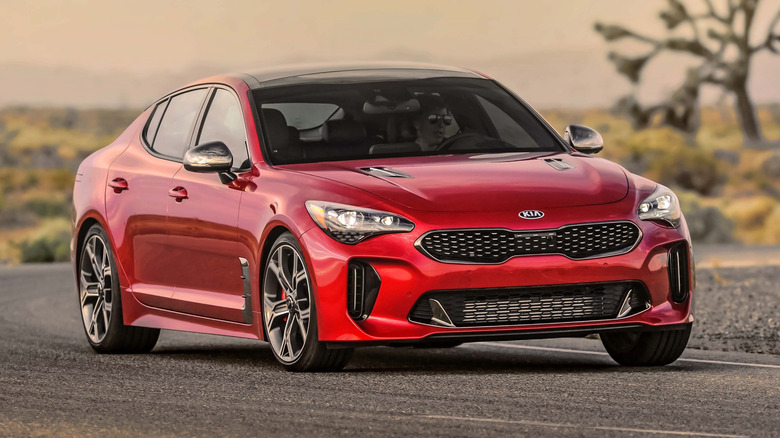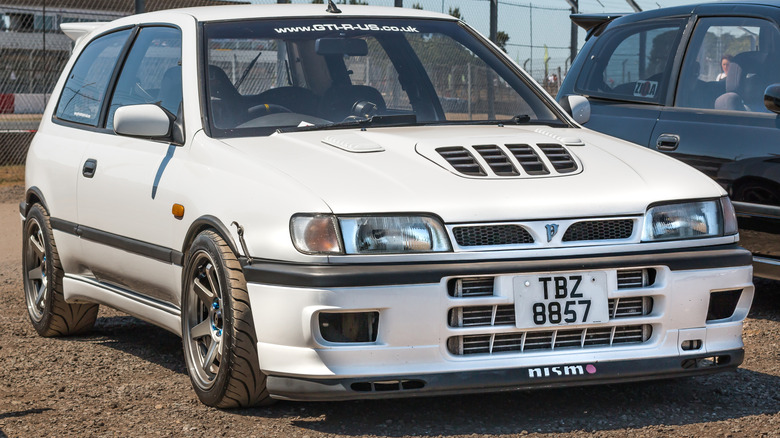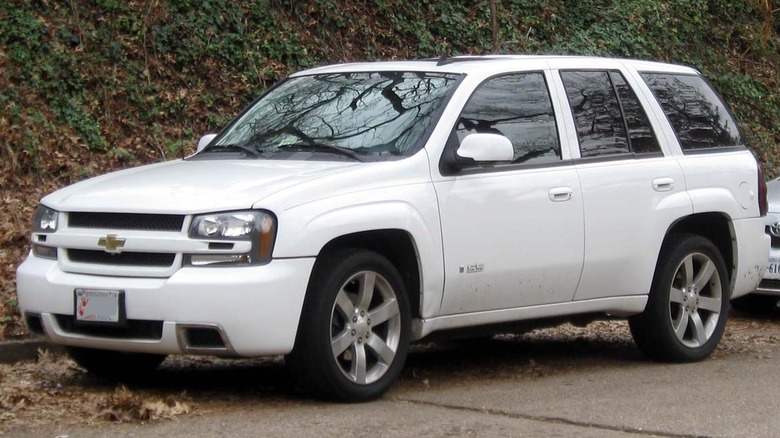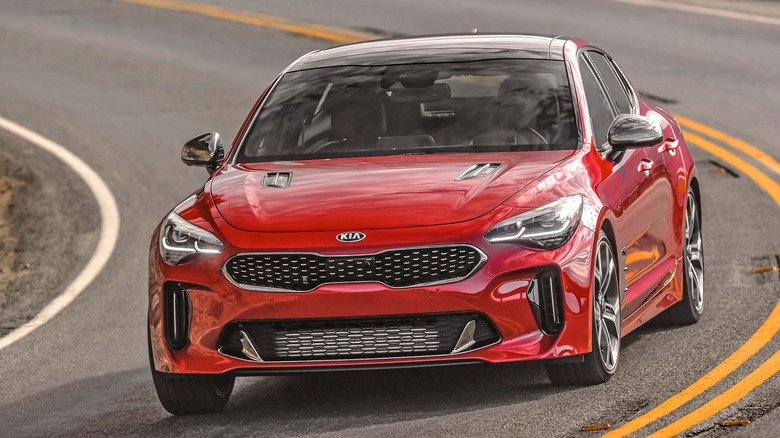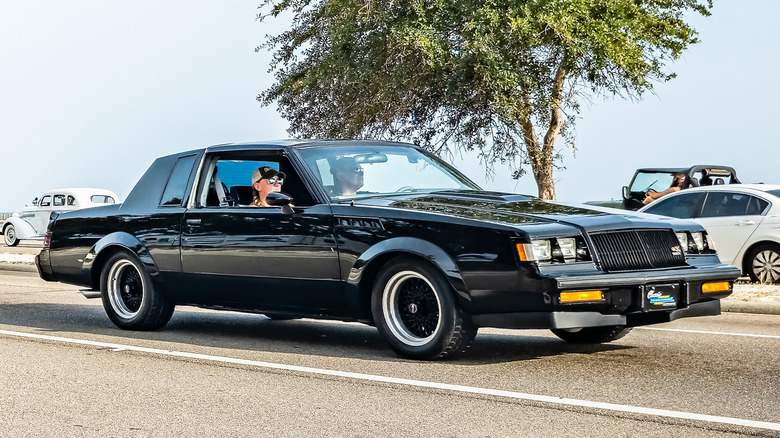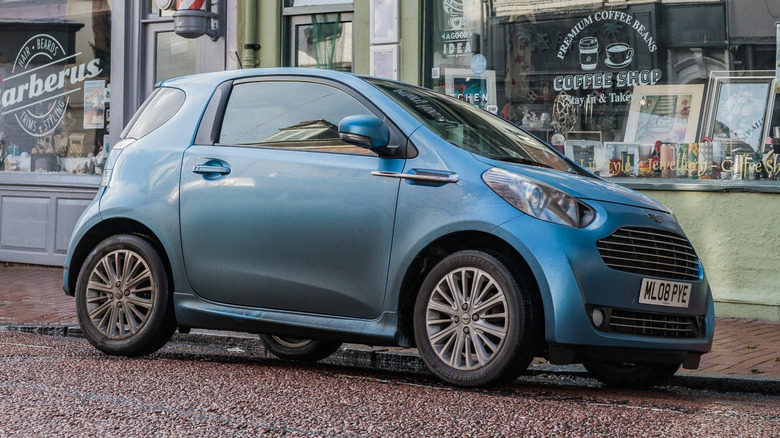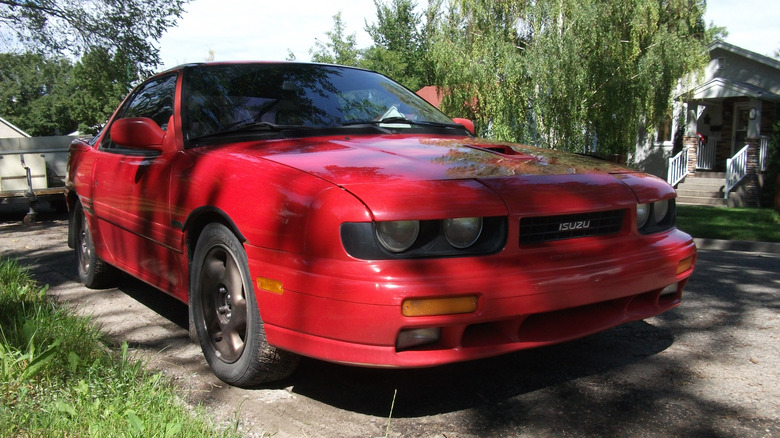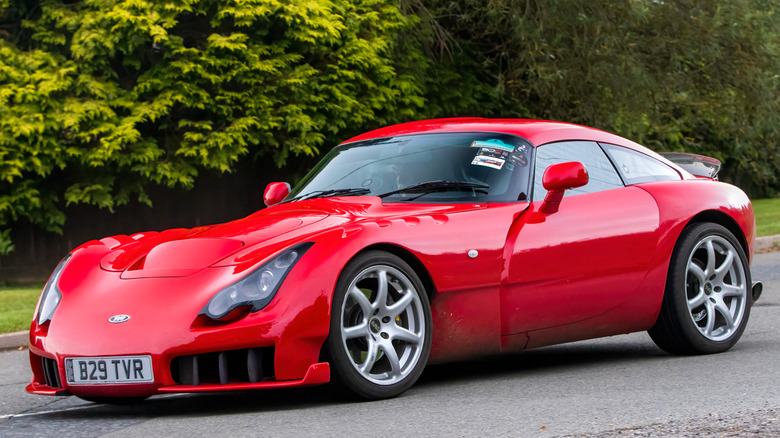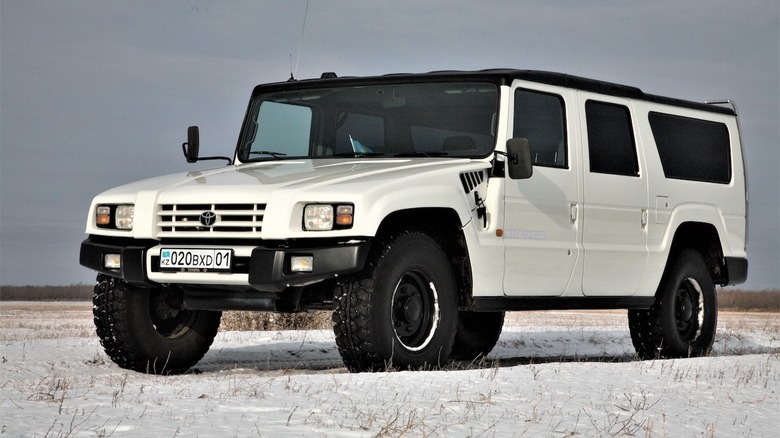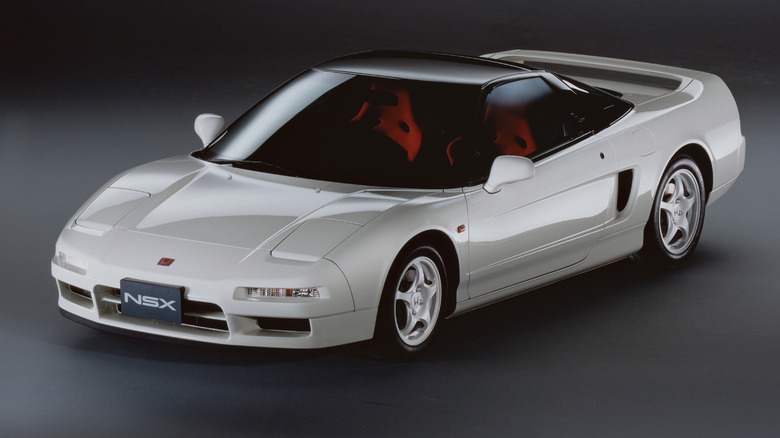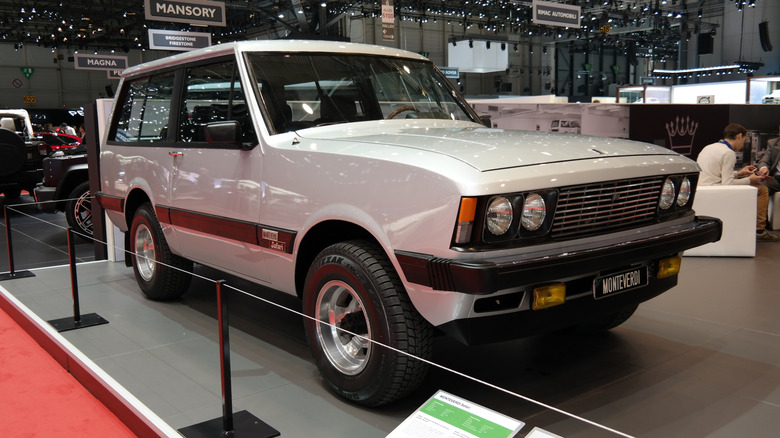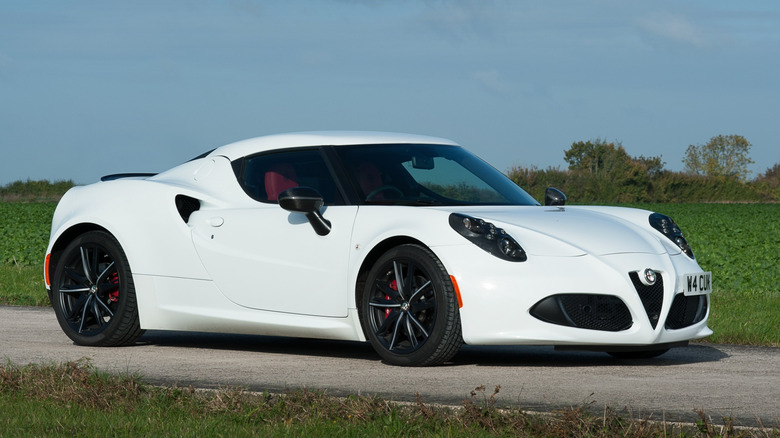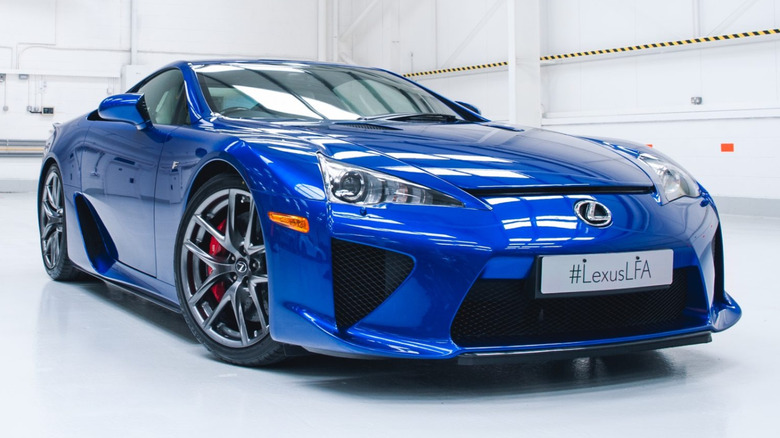12 Short-Lived Cars We Wish Were Still Around
For every classic car that gets brought back after decades away from dealerships, there are plenty more that disappear for good. Some models are simply the victims of changing buyer tastes, while others get seemingly forgotten about by manufacturers after being overlooked and left without updates until they're quietly shelved. Other times, it's a manufacturer's finances that prove to be the limiting factor, whether they ax niche models in a bid to focus on more profitable segments or even run out of cash altogether.
Whatever the reason for the short production life of these 12 models, we'd argue that they all deserve to be given a shot at revival. Some have proved to be ahead of their time while others were simply never intended to have long production runs. Either way, they all deserve more than to be simply confined to the archives. However, the sad reality is that most have little or no chance of being revived, even if enthusiasts might wish they were still around.
Nissan Pulsar GTi-R
Nicknamed Baby Godzilla thanks to its high power output and ATTESA all-wheel drive system — the same one found in the R32 Skyline GT-R — the Pulsar GTi-R is a reminder that Nissan once cared about rallying. It was built to homologate the Pulsar for Group A of the WRC, and to meet homologation, a minimum of 5,000 examples had to be built. Production began in 1990 and ended in 1994, although by the time it was discontinued, Nissan had already decided to pull out of competing at rallying's top level.
We've previously argued that the Pulsar GTi-R is one of Nissan's most important cars, despite the fact that it never received the same global recognition of its larger stablemate, the Skyline GT-R. While a 227 horsepower all-wheel drive hot hatch with rallying roots is probably never going to be a likely candidate for resurrection, particularly given Nissan's recent financial troubles, Toyota has proved that there's still an appetite for such a car. In Japan and Europe, where the Pulsar GTi-R was originally sold, the GR Yaris has proved hugely popular, selling in far higher numbers than Toyota was expecting.
A revived rallying Nissan would provide the company with a new halo car in Europe — the Z isn't sold there as it doesn't meet emissions standards. Also, since the WRC is revamping its ruleset for the 2027 season with the aim of attracting new manufacturers, now is arguably as good a time as any for a revival.
Chevrolet Trailblazer SS
The current Chevrolet Trailblazer is boring. Buyers get the choice of a 1.2L or 1.3L engine under the hood, with those engines mated to either a CVT or a nine-speed automatic transmission. The most potent version makes 155 horsepower. Make no mistake, it's still a competent, competitively priced SUV with low ownership costs, and as a result, it's still a sales success.
Still, would it hurt Chevy to make a higher powered version? In 2006, the brand did just that, unveiling the Trailblazer SS. It was still a practical family SUV, but it had a 395 horsepower LS V8 under the hood. At everyday speeds, it remained relatively indistinguishable from its run-of-the-mill counterpart, going without the flashy exterior trim that was found on some other hot SUVs at the time. The only giveaway is the SS badges and the car's slightly lower ride height, although again, neither were immediately noticeable at first glance.
The SS stuck around until 2009, with around 25,000 examples reportedly built before it was axed. Chevy's current Trailblazer is a small, modest SUV built in Korea, which isn't exactly known for making V8-powered brutes. As unlikely as it is to happen though, we'd still like to see a stealthy high-performance Trailblazer revived for a second round.
Kia Stinger
Despite rumors to the contrary, there's so far no indication that Kia is planning to revive the Stinger sports sedan for 2025. It was initially discontinued in 2023 after just six years on the market, with slumping sales blamed for its production run ending. In its first full year on sale, the Stinger managed to sell almost 17,000 units in the U.S. alone, but by 2023 that number had declined to 5,215.
The car's lack of sales is likely due to a mix of factors. However, the biggest reason is that buyers simply aren't looking for sports sedans as much as they used to, with SUVs and crossovers becoming increasingly popular. Unlike some of its German rivals, Kia also couldn't count on the prestige of its badge alone to get buyers interested.
That's a shame, as its 368 horsepower turbocharged V6 engine provided plenty of poke and its exterior styling was arguably sleek enough to credibly rival offerings from BMW and Audi. Unfortunately, Kia bringing the gas-powered Stinger back for a second generation is now extremely unlikely to happen, with the brand pivoting towards electrified models. However, rumors suggest that an EV successor might be launched in the future.
Buick GNX
Buick has managed to stage an impressive turnaround in recent years, helped by its distinctive new design language and the affordable pricing of its lineup. That affordable pricing is now under threat from tariffs, so the brand might need to be creative if it is to keep up its hot streak. Thanks to one Kendrick Lamar, the Buick GNX — or Grand National eXperimental — received a significant amount of free publicity in 2024, not that it needed it. It was already a highly sought-after model among well-heeled collectors, with an average sale price of around $175,000 according to Classic.com.
The car was produced for one year only in 1987, with only 547 examples built. It was a modified version of the Regal, with around 300 horsepower on tap and every example finished in the same shade of black. Buick doesn't have an existing platform on which to base a modern successor, since its current lineup is made up solely of SUVs.
However, the company has shown off sporty concept cars, most notably the Buick Wildcat EV concept that helped shape the brand's current design language. Finally building a limited-production muscle car in the same vein as the GNX would help solidify Buick's status as being back at the top of its game. Still, with the impending tariffs, it's safe to assume that the brand's leadership currently has bigger things to worry about.
Aston Martin Cygnet
It's certainly one of the strangest cars built by a luxury brand, but look past its appearance and the thinking behind the Aston Martin Cygnet isn't as odd as it might seem. There are plenty of congested cities around the world with narrow streets, particularly in Europe and Asia, and there are also plenty of wealthy people living in those cities. Those wealthy people might want a luxury car, but it would also be beneficial if that car was small enough to park in tight spaces and fit down narrow side streets.
That's the problem that the Aston Martin Cygnet aimed to solve. It was built on the bones of a tiny Toyota city car, but still featured a typical Aston Martin interior. Low sales numbers ensured that its production run was short lived, spanning from 2011 to 2013. A few years later, Aston Martin also built a one-off example of the car with a 430 horsepower V8 engine.
While the execution of the Cygnet wasn't great, the idea of a highly luxurious city runabout arguably still has merit. However, even if the automaker could create a follow-up with less awkward looks than the original, there's still no guarantee it would sell. As anyone who's spent time driving around London's richer neighborhoods will know, the wealthiest city dwellers can't seem to shake their addiction to giant SUVs like Range Rovers and G-Wagons, even if they're far from practical for driving or parking around the city.
Isuzu Impulse RS
Offered for only two years between 1991 and 1992, the Isuzu Impulse RS is not remembered by many. The Impulse was related to the Geo Storm, but the RS variant was Isuzu's top-spec variant, and received a number of improvements over its better-known cousin. Lotus was given the task of engineering its chassis, which made the Impulse RS a capable car in the right hands. Its 160 horsepower turbocharged four-cylinder engine was developed in-house by Isuzu, and it also went on to be used in the Lotus Elan.
While the Impulse RS was never considered the greatest Japanese sports car of its day, it's still a shame that the brand never got the chance to improve it. Low sales of its car division and consistent interest in its trucks and SUVs saw Isuzu prioritize the latter segments, eventually withdrawing from creating its own cars altogether.
Perhaps if the Impulse had been better received, it would have encouraged Isuzu to stick around and continue building its own cars. Either way, the Impulse RS remains a cool, overlooked model from one of Japan's less celebrated manufacturers, and we certainly wouldn't mind if Isuzu decided to have a crack at making a successor, as unlikely as that is.
TVR Sagaris
The TVR Sagaris is arguably the brand's best car, but its production life was unfortunately cut short thanks to its maker's financial woes. It was launched in 2005 with a 4.0L straight-six engine churning out 406 horsepower, which gave it a zero to 60 mph time of less than four seconds. Its top speed reportedly sat somewhere north of 180 mph, although with no traction control or airbags, getting anywhere close to that speed required a huge dose of bravery and plenty of driving skill. Only 211 examples were built over a two year production run, which came to a close after TVR ran out of cash.
The company declared bankruptcy in 2006, and since then, has not made a new production car. Any new Sagaris would have to sit alongside TVR's already-announced upcoming Griffith, another revived nameplate. The company's new owners have previously said that the V8-powered Griffith will be entering production imminently, first in 2018, then virtually every year since then.
The latest news is that the revived TVR walked away from a controversial deal with the Welsh government to build a factory for the Griffith, which was partly subsidized by taxpayers' money, before switching to a new base in England. There's still no word on whether the Griffith will ever make it into production, despite TVR reportedly taking hundreds of deposits for the car. So, a revived Sagaris seems extremely unlikely to ever happen, since the company can't even get the Griffith into customers' hands.
Toyota Mega Cruiser
GMC has resurrected the Hummer in all-electric form, but its obscure Japanese counterpart has yet to return. The Toyota Mega Cruiser has a similar backstory to the Hummer, as it was originally designed for military use but later achieved cult status as a civilian vehicle. It launched in Japan in 1996 and remained on sale until 2001, with around 100 civilian examples reportedly sold during that time.
With its cavernous interior, four-wheel steering, and 1,650 lb cargo capacity, the Mega Cruiser made the ideal vehicle for specialist rescue teams and other emergency services that needed to reach remote locations. It could get over virtually all kinds of terrain, although it couldn't go anywhere fast, with its 4.1L turbodiesel four-cylinder engine rated for 148 horsepower.
Without the financial support provided by a Japanese military contract, it's hard to envisage Toyota bringing the Mega Cruiser back today. However, both the military and wealthy civilians in places with limited road infrastructure still need capable all-terrain vehicles, and the success of the Hummer EV has shown that plenty of American buyers are willing to pay for an over-the-top off-roader as well. So, it's not entirely inconceivable that the Mega Cruiser could return one day, even if it's unlikely.
Honda/Acura NSX Type R
Although Honda revived the NSX supercar for a second generation in 2016, it never produced a Type R variant of that new car. This seems odd, as the NSX and Type R badges have shared roots — in fact, the first Honda ever to boast the Type R badge was the NSX Type R of 1992. This initial, hotter variant of the brand's seminal supercar remained in production until 1995, with only 500 examples built during that time. It was made lighter and tuned more aggressively than the standard car, but it didn't receive a power boost.
Honda then released two more NSX Type R variants, both of which were even more limited than the initial run. The 2002 NSX-R received engine upgrades, revised bodywork, and uprated suspension and brakes, and 140 examples were produced that year. A final NSX Type R, called the NSX R GT, then appeared in 2005. It's the rarest variant of all, with only five examples built as homologation requirements for the Japanese Super GT championship.
Honda did get close to making a successor, unveiling the NSX Type S in 2022 to round off the production of the second generation car. However, it stopped short of committing to a full Type R version. Honda is reportedly working on a third generation of the NSX, which is set to be all-electric. The full details remain unclear for now, but let's hope that this upcoming NSX wears the famous red badge once again.
Monteverdi Safari
Swiss design might be seen as the gold standard in industries like watchmaking, but the Swiss auto industry has not had much of a global impact. However, a number of Swiss automakers have come and gone over the decades, including Monteverdi. The Safari was Monteverdi's most popular model, reportedly selling around 2,700 examples, and was pitched as a more upmarket alternative to the Range Rover. Production began in 1976 and lasted until 1982, with the company closing a year later.
The Safari's luxurious interior and potent V8 engines were arguably ahead of their time, with Range Rover eventually adding similar features years after its Swiss counterpart had been axed. The Monteverdi was offered with high-tech extras like an in-car phone and Sony TV, while under its hood sat a choice of American V8 engines including a 5.7L International Harvester V8. The chassis of the SUV was also borrowed from the Harvester, but the bodywork and interior fittings were completed by Fissore, an Italian coachbuilder.
At the time the Safari was unveiled, the Range Rover didn't have much in-car tech, nor did it have optional luxury upholstery or even an automatic transmission. The Safari beat it to the punch in all those regards, but the Range Rover still proved to be more successful in the long run, while the Safari has been relegated to the archives.
Alfa Romeo 4C
Alfa Romeo's alarmingly poor sales figures mean that the company is busy trying to adjust its lineup to appeal more to its core audience. It certainly doesn't have the resources or money to spend on developing a new, niche sports car, but if it did, then a second generation 4C would arguably be a worthwhile endeavor.
The original 4C arrived in hardtop form for the 2014 model year, with Alfa later deciding to slice the roof off to create a Spider variant. We spent time behind the wheel of both variants during their time on sale, and despite their drawbacks, we came away from both having enjoyed our time with them. However, the original 4C's drawbacks were significant, with the car's complete disregard for practicality alongside its cheap-feeling interior making it a difficult car to drive everyday. Still, its shrunken supercar looks and the distinctive note of its four-cylinder engine made it well worth shelling out for if you could overlook those issues.
A second generation car would have the chance to fix some of the original's limitations, and thus potentially widen the car's appeal to a broader audience. It probably still wouldn't sell in big numbers, but then none of Alfa's more family-friendly models are selling well at the moment either, despite the brand's best efforts.
Lexus LFA
It isn't hyperbole to say that the launch of the LFA was a defining moment for the Lexus brand. For the first time, it had established itself as a supercar manufacturer, and it wasn't just any supercar either. With its unique V10 engine and striking looks, it was unlike anything else on the market. That's part of the reason why LFA examples continue to command a premium among buyers today. The LFA was always intended to be a limited-run halo car, with production launching in 2010 and the final example being produced in 2012.
Unlike most of the cars here, which have little to no chance of ever being revived even if we'd like them to be, the LFA is very likely to receive a successor. In fact, a prototype version of that successor has already been spotted on the road in Germany, albeit with significant camouflage. It's reportedly set to debut as soon as 2026, with a race-spec variant also entering the World Endurance Championship and IMSA series around the same time. So while it isn't confirmed for production yet and details on its powertrain remain scarce, it seems that an LFA successor will indeed be around again in the near future.
